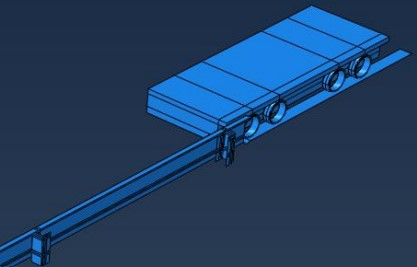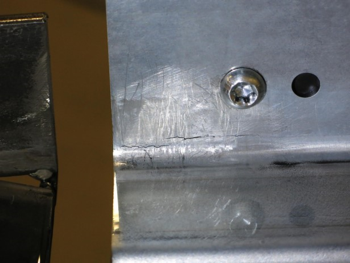INVESTIGATION OF STRESSES IN DYNAMICALLY LOADED SHUTTLE RAILS
Jordy Schönthaler - (August 2022)
SUMMARY
Automatic storage using a shuttle to transport pallets is becoming more common in the warehousing industry. The use of these shuttles introduce dynamic loads in the shuttle rails, which eventually can lead to failure of the rail. To give an estimation of the service life of the rails, it is important to gain insight into the stresses in the rail, as a result of impact loading and vibrations.
Figure 1: A shuttle system to transport pallets. |
Figure 2: Crack initiation within the rail due to dynamic stresses. |
To determine these stresses in the rail, a combination of experiments and numerical modelling was used. Several models have been proposed to investigate the dynamic behaviour of the shuttle-rail system. The most promising model was a numerical finite element model. An experimental modal analysis has been performed to determine the dynamic properties of a test-setup at NEDCON. These dynamic properties were used to determine appropriate boundary conditions for the finite element model. Furthermore, an experiment has been performed to validate the finite element model using strain gauges and accelerometers.

Figure 3: A finite element model of the setup.
Dynamic properties that were determined with the modal analysis show two corresponding natural modes and frequencies in the first 10 natural modes of the finite element model. However, lower natural frequencies were observed in the experimental modal analysis. Also, the results of the finite element model show a good similarity with the strain results that were obtained experimentally, though there is an underestimation of the strains that were determined with the finite element model. This means the finite element model behaves more stiff compared to reality. Nevertheless, the finite element model shows good potential to determine the stresses and strains in the rail.


